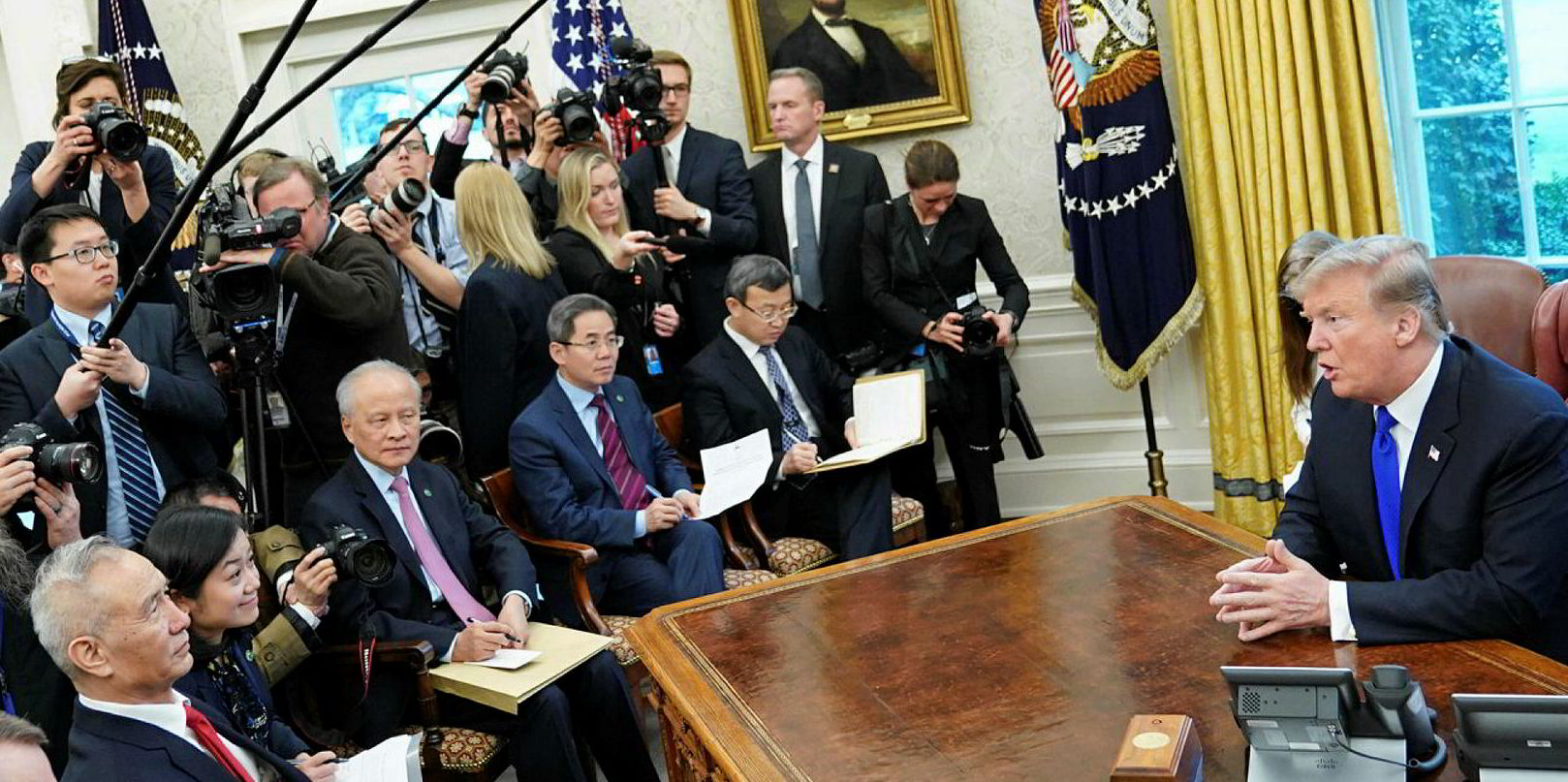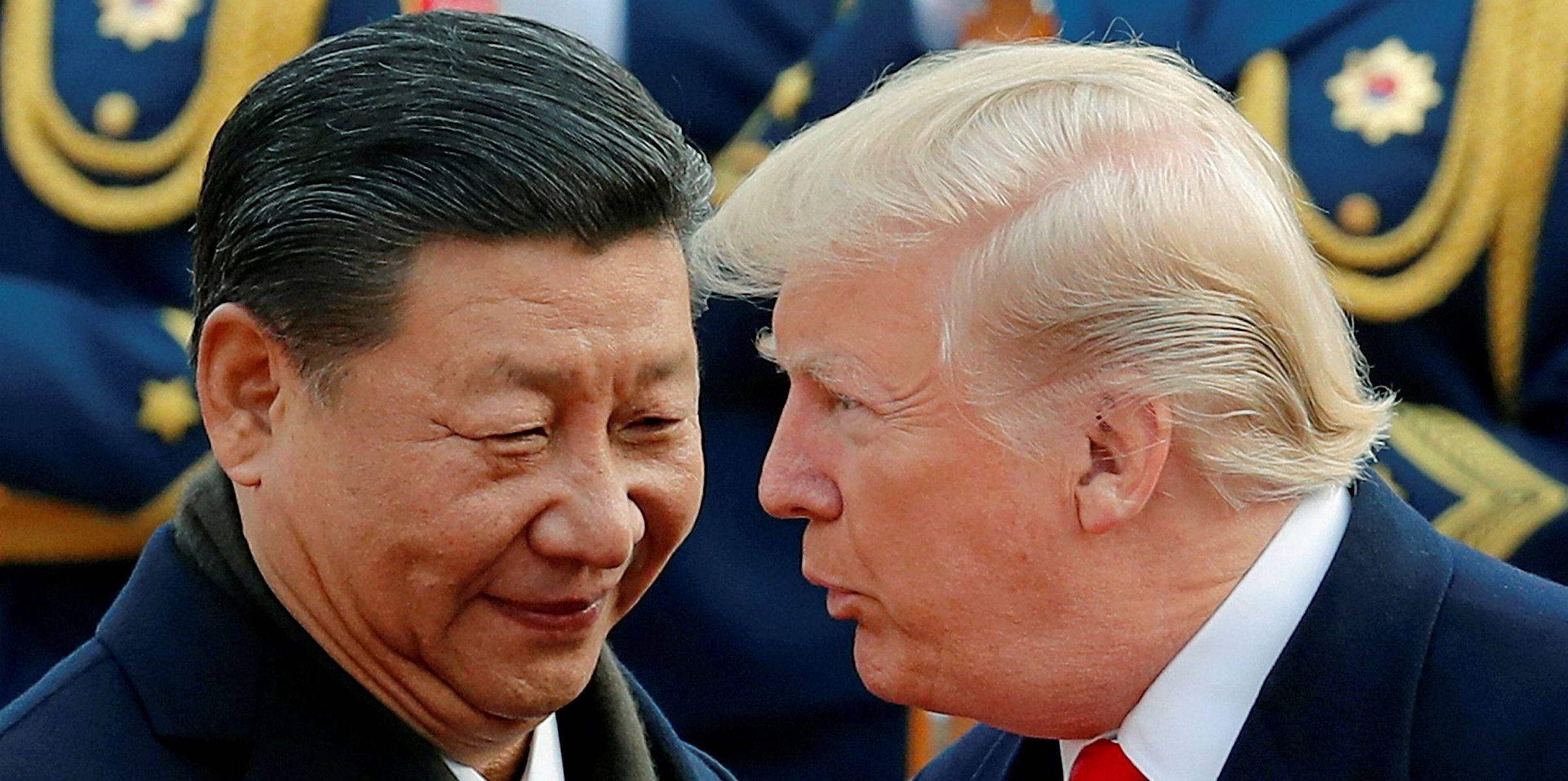Donald Trump may yet boost liner operators by declaring an end to the damaging trade war with Beijing that has dampened demand.
His delay to planned new tariffs on imports from China triggered an immediate rise in the share price of several shipping companies this week.
The US president said there had been “substantial progress” in behind-the-scenes talks with the government of his Chinese counterpart, Xi Jinping.
Trump is nothing if not mercurial and is capable of changing his mind at a moment’s notice, so we should be wary.
But he does seem keen to conclude a deal, perhaps because other benchmark projects — such as a wall with Mexico — are floundering.
He may be willing to make significant compromises on myriad subsidiary issues with China, such as intellectual property rights, even as he presents a final deal as a major victory for the US — and himself.
Investors are beginning to build into their calculations the end of a US-China trade dispute.
Mellowing stance
The price of oil has hit $67 per barrel, up from a low of almost $50 per barrel little more than two months ago. Much of the impetus is coming from expectations that Trump is preparing to retreat from his hardline stance against Xi, whom he blames for the enormous bilateral trade imbalance.
The CSI 300 stock-market index of leading Shanghai and Shenzhen stocks shot up by 6% on Monday — its best one-day performance in three years. The CSI has risen by more than one-quarter this year as optimism grows that the tit-for-tat spat may soon be over.
Optimism grows that the tit-for-tat trade spat may soon be over. That would lift a considerable cloud over share prices, the world economy and the boxship sector
That would lift a considerable cloud over share prices, over the world economy and over the boxship sector in particular.
But it is not the only cloud on the horizon.
Many liner operators benefited in 2018 from a surge in business from importers trying to beat the new US trade tariffs.
And freight rates rose due to shipping service withdrawals and an improvement in the depressed West African trade.
This helped AP Moller-Maersk announce a pre-tax profit of $238m for 2018 — up from $25m in 2017 and a loss of nearly $300m a year earlier.
The positive results were repeated by rival Hapag-Lloyd, which beat its profit forecast for 2018, boosted by better freight volumes and its cost-cutting merger with United Arab Shipping Co.
But last week, Maersk issued a warning that “the current risk of further restrictions on global trade” could undermine freight rates.
Chief executive Soren Skou said container demand growth could fall to 1% in the coming 12 months, from more than 3.7% last year. In its heyday, the box trade grew at 11% annually.
Bellwether of world trade
Even if a deal is patched together between Trump and Xi, there are outstanding issues between the US and Europe to be resolved, said Skou, whose company is seen as a bellwether of world trade.
Maersk is also worried about the impact of Brexit, uncertain foreign-exchange rates, rising bunker prices and IMO 2020.
Those worries have led the group to put the brake on further mega-ship newbuildings.
Meanwhile, another threat to the whole liner conference system in Europe has emerged. Shippers and port industries have started a push to persuade the European Commission to repeal legislation that exempts consortia from certain competition rules.
Liner operators clearly have more to think about than whether Trump can cook up a trade war triumph, but that would boost sentiment considerably.





